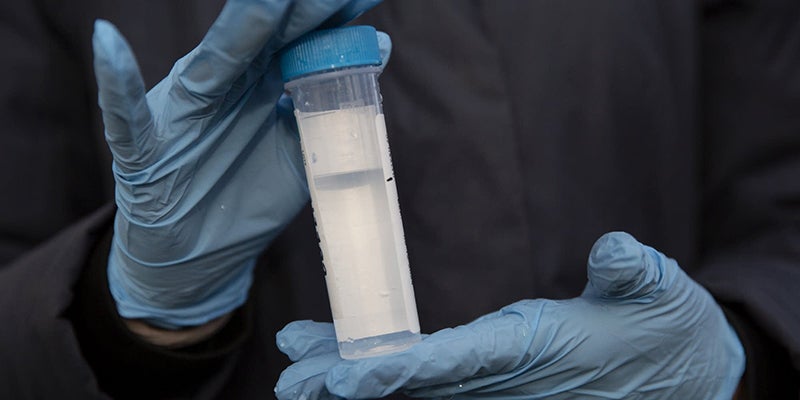Hundreds of Minn. facilities to test for ‘forever chemicals’
Published 5:38 pm Tuesday, March 22, 2022

- Minnesota Department of Health student paraprofessional Carolyn Enright holds a water sample from a private well in West Lakeland Township, Nov. 15, 2019. The Minnesota Department of Health had been sampling private wells and community water systems in the east metro area to identify areas that may have been impacted by PFAS contamination. Now, several kinds of facilities in Minnesota are being asked to test for the “forever chemicals.” Christine T. Nguyen/MPR News 2019
|
Getting your Trinity Audio player ready...
|
By Kirsti Marohn
Nearly 400 wastewater treatment plants, industrial facilities, airports and landfills across Minnesota will begin monitoring for PFAS this year, state regulators said on Tuesday.
They say the data collected will provide vital clues about how and where the ubiquitous compounds known as “forever chemicals” are getting into Minnesota’s air, water and soil.
PFAS, or per- and polyfluoroalkyl substances, are a large class of human-made chemicals known for their durability. They’re found in a wide variety of industrial processes and commercial products, including nonstick cookware, carpet, clothing and cosmetics.
The Minnesota Pollution Control Agency said it will collect monitoring data from 379 facilities identified as potential emitters of PFAS. The expanded monitoring is part of the state’s blueprint, released last year, aimed at preventing, managing or cleaning up PFAS pollution.
“At its core, the plan will help us understand the presence and levels of PFAS across many facilities and help us craft a holistic and strategic response,” said MPCA Commissioner Katrina Kessler.
The list includes 137 manufacturing or industrial facilities, 91 city sewage treatment plants and 143 landfills or solid waste sites.
Just because a site is on the list doesn’t necessarily mean it’s releasing PFAS, but it has a higher likelihood based on the type of facility or the waste it receives, Kessler said.
The list also includes eight regional airports that use firefighting foam containing PFAS, including Bemidji, Brainerd, Duluth, International Falls, Hibbing, Rochester, St. Cloud and Thief River Falls.
The monitoring will be voluntary, at least for now. Kessler said the agency will work with the facilities to evaluate the results and decide if additional steps are needed, such as adopting new practices to reduce PFAS releases or swapping products with PFAS-free alternatives.
The facilities will begin monitoring this year, but a summary of the data won’t be available until 2024.
Prolonged exposure, usually through drinking water, to some PFAS has been linked to human health problems, including kidney and thyroid problems, low birth weight and some cancers.
The Minnesota Department of Health has set health-based guidance values — or the level considered “safe” — for six PFAS compounds, and is working on values for six more, said Dan Huff, assistant health commissioner.
However, regulating PFAS is an uphill battle.
There are more than 5,000 PFAS with more than 9,000 different chemistries, Kessler said, and new compounds are invented every day, used in industry and incorporated into commercial products.
The pollution control agency is asking state legislators to approve several PFAS-related measures this session, including $2 million for grants to identify sources and design projects to prevent PFAS pollution, and funding to study baseline PFAS levels in soil and water.
Some state lawmakers also have proposed bills that would restrict the use of PFAS in certain products, including cosmetics, cookware and ski wax.




